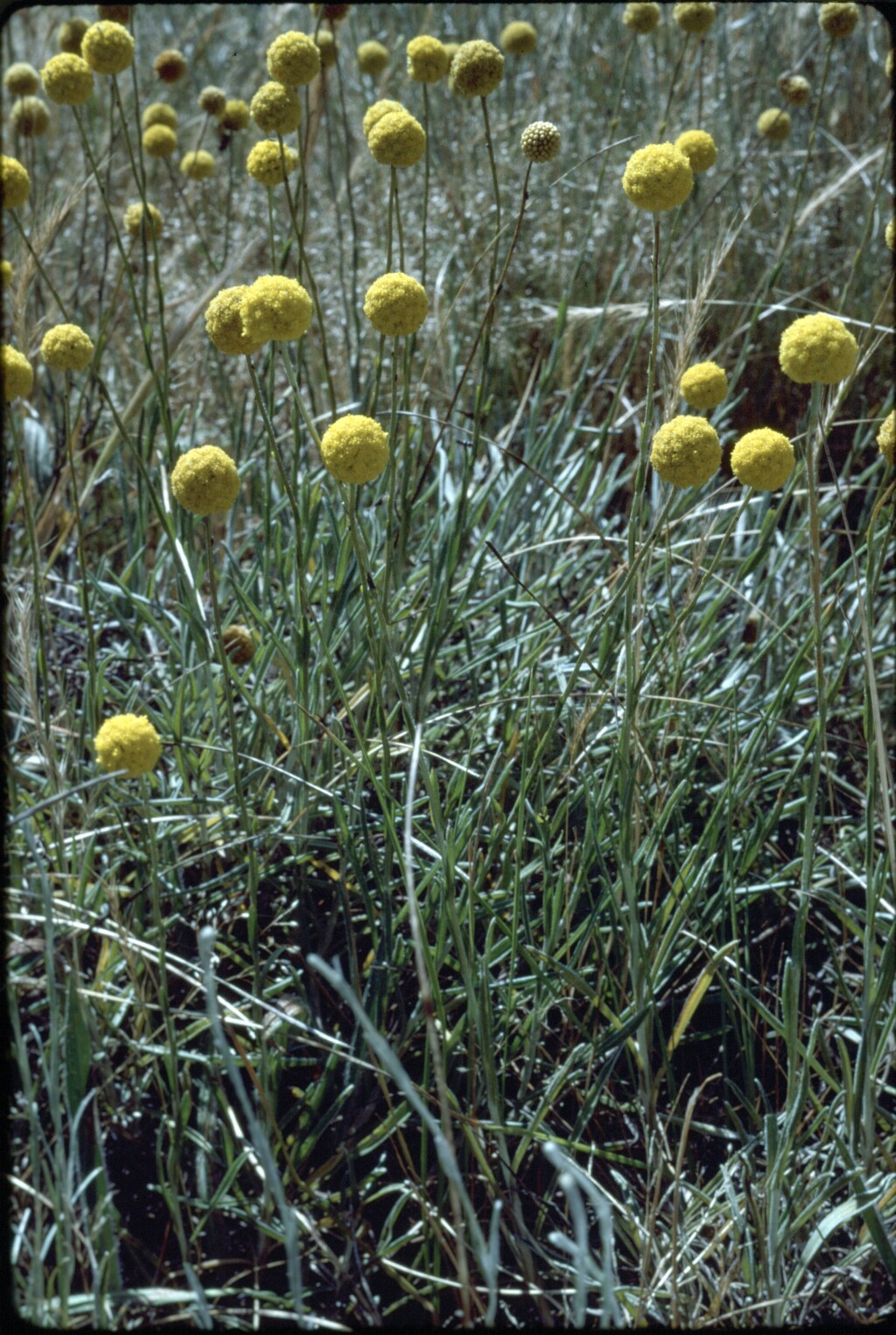Pycnosorus chrysanthus
(Schltdl.) Sond. Golden Billy-buttonsErect or ascending annual herb to c. 60 cm high; stems many, unbranched, densely white-woolly. Basal leaves few, oblanceolate; cauline leaves linear to linear-lanceolate, 1.5–10 cm long, 2–7 mm wide, acute, gland-tipped, upper surface olive-green to brown, glabrescent, lower surface often paler, white-woolly particularly on midrib and margins. Compound heads ovoid or globose, 8–15 mm diam., solitary; common involucre absent; capitula 50–100; capitular bracts linear, 2–3 mm long, herbaceous, brown, without scarious margins except sometimes at base, glandular, woolly at base; involucral bracts 5 or 6, oblanceolate, scarious, apices yellow. Florets golden-yellow. Cypselas 1–1.5 mm long; pappus bristles 11–16, plumose, 2–3 mm long. Flowers mostly spring and summer.
LoM, MuM, Wim, VVP, VRiv, MuF, GipP, OtP, Gold, CVU, HSF, HNF. Also NT, SA, Qld, NSW. Scattered across northern Victoria from Little Desert to Yarrawonga. Scattered across northern Victoria from the Little Desert to Yarrawonga; also on the basalt plains near Melbourne where rare. Found in moist areas in woodland, scrub and grassland on heavy soils.
Pycnosorus chrysanthes is often treated as a separate name described by Mueller, but in its pubication, it was attributed by Mueller to Sonder so is merely an orthographic variant of P. chrysanthus (Schltdl.) Sond.
Jeanes, J.A. (1999). Asteraceae. In: Walsh, N.G.; Entwisle, T.J., Flora of Victoria Vol. 4, Cornaceae to Asteraceae, pp. 652–666. Inkata Press, Melbourne.
 Spinning
Spinning